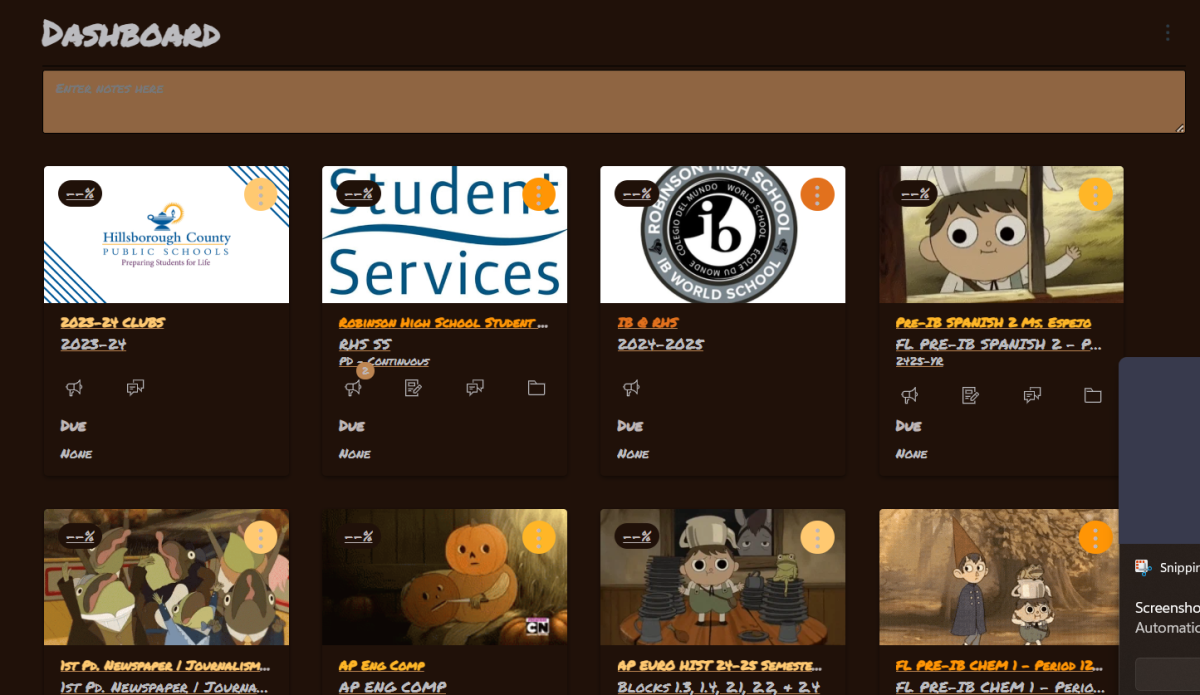As the second semester ramps up, so does the workload, leaving students scrambling for better ways to study. With technology being the fastest-growing resource in schools, why not make studying smarter instead of harder? Many students end up using studying techniques that are just not sustainable for the amount of workload that we get. Methods such as watching a 20-minute review video and taking an hour to make notes can lead to a quick burn-out. The simple knowledge of a few technology tips to upgrade the efficiency and thoroughness of your studying routine can be a game changer for the tedious spring school season.
Free PDF Textbooks: Drop the Load this Semester
From what I’ve seen, finding a free PDF of a textbook can be extremely helpful, especially if the teacher of the class is requesting a specific type or version of the textbook, and you don’t want to go through the struggle of buying it and hauling it around the rest of the school year.
“I love it [PDFs of textbooks], I think in all my classes we use it because no one wants to carry around a textbook. It’s way easier, I can access it at any time,” student Reid Taggart (‘26) said.
However sometimes if it’s not given directly by the teacher, it can be hard to find PDFs of a textbook. Open Textbook Library is just the tool to help. It has a lot of textbooks that you can access for free, or you could look up how to find free PDFs of textbooks and Google gives about 20 more results.
Portable Chargers: Never Lose Power Again
Once you’ve got your study materials sorted, ensuring your devices stay powered is just as important. Especially for students it makes a big difference between being huddled in the sacred corner of the classroom with the outlet or peacefully sitting at your desk with your phone charging. It’s no mystery that students use their phones all the time, especially when submitting assignments. Some phones tend for the battery to go down quickly, and some apps drain the battery faster than expected. Also remembering to charge your phone every day can be a hassle if you’re forgetful, and a portable charger is a lifesaver for students juggling multiple devices throughout the day.
“I use it [portable charger] three times a week depending on my phone percentage throughout the day. I can use it for my iPad and AirPods as well,” student Sophia Ngyuyen (’27) said.
Digital Notes with a Stylus: The Best of Both Worlds
I have always been told that your brain remembers more of what you wrote if you write it by hand and not on a keyboard, but that doesn’t mean it can’t also be digitalized without wasting paper. Using a computer stylus could keep all of your notes in one place pretty easily if you kept all the files in a folder but papers are notorious for getting lost and crumpled.
“I like using it [computer stylus] to write on PDFs,” student Alina Diaz (’27) said. “It’s definitely easier than to print stuff out and keep copies of it with you.”
AI for Studying: Use It to Help, Not Harm
I personally believe that some students misuse AI, using it to find answers rather than to help them study. I’ve used Google’s Gemini before to create mnemonic devices to help memorize information quickly before tests, and what I’ve heard from other students they use AI programs like ChatGPT to help summarize notes that they took. There are so many things’ students can do to study with AI such as creating practice tests, study guides and flashcards other than simply cheating.
“It [ChatGPT] can explain things really in-depth which can help students understand a certain topic,” Nguyen said.
Libby: The Library in Your Pocket
The Libby app is a free library on your phone, and I use it regularly. You can check out any eBook from the entire eBook catalog in Hillsborough County. This could be very helpful and cost-effective, especially for English class if a student forgets to buy a book that is being used, they still can read it without missing anything. However, it could also be used to find books to help in specific subject areas or with specific topics. It can also be used purely for enjoyment, if you couldn’t make a trip to the library, you could still access it using your phone.
“I like that you can really easily put stuff on hold and if you don’t have to put it on hold you can just check it out and open it immediately,” Diaz said. “You don’t have to carry a physical book and it doesn’t use a lot of battery life either which I like. You can get books much quicker than normally using a physical library.”
Better Canvas: Customize Your Study Space
When I open the Canvas app, I feel the bright white background blinding my eyes as I look for my final grades, which does not help put me in a calm mindset. However, with the Google browser extension, the customization options for Canvas feel more comforting than the original. Better Canvas can change how the canvas looks with customization for fonts, class cards, and the background. All of these can be changed individually, or you can pick through many themes to change the look of Canvas altogether. I picked the Over the Garden Wall theme and it makes me want to open Canvas more just to admire my work. That’s not the only thing that students use it for, it can give you important day-to-day and quarterly statistics.
“I like it because it can monitor my progress [in completing schoolwork], and it can also calculate my GPA that I have for the quarter,” Nguyen said.
The most important thing though, is that students are able to do what they need to do to be able to study to achieve good grades, not everything on this list will work for everyone, but that’s okay. There are dozens of student hacks that are out there and can completely revolutionize your studying routine.


